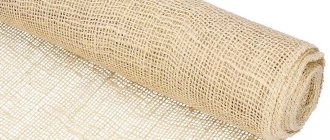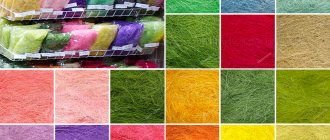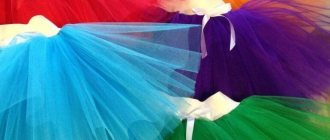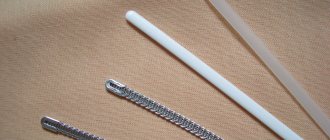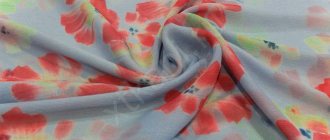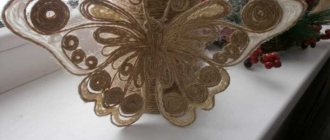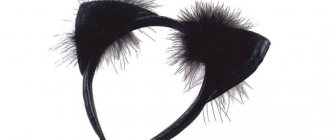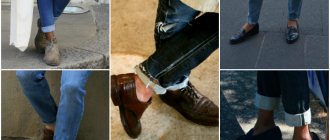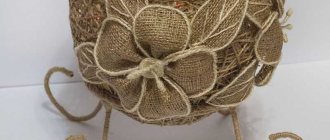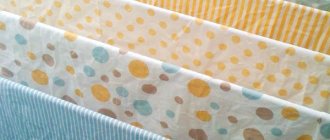Many needlewomen who are interested in new types of materials may have often heard about such a natural fiber as sisal. Few people know what this material actually is. Where does it come from, what can be made from it?
In fact, sisal is a completely natural plant fiber. It is produced in Mexico and Latin American countries. People have liked its properties since ancient times. Products made from sisal came to Europe for the first time only in the 16th century. Sea ships from America arrived in Spain, carrying unusually strong ropes.
People did not yet know what sisal was, but even then they understood its value. Since then, of course, natural fiber has been actively replaced by synthetic analogues, but the production of sisal in the world is still quite developed. The world's first producer of this raw material is Brazil. Tanzania, Mexico and Colombia are not far behind.
In the article we will look in detail at what sisal is, what plant it is produced from, how it happens, what can be made from this material, and how to work with it in our time.
The secret of the plant
Sisal is obtained from the long, narrow-pointed leaves of a plant belonging to the genus Agave; more precisely, its name is: Agava sisolana. Nowadays, the name is increasingly simplified and the plant is also called sisal. Good full-fledged agave bushes grow in 5 to 7 years. It is during this period that the size of the leaves reaches two meters. A thorn grows at the very tip of the sharp leaf. The leaves are dense, sword-like. One rosette of agave can contain up to 250 leaves of different lengths.
Interesting fact! In the last year of its 10-year existence, a long arrow with a flower is thrown out from the center of the rosette of leaves, sometimes its size reaches 6 meters. After this, the plant gradually withers and dies. This type of agave does not produce seeds, since the plant is a hybrid. You already know what sisal is, now let's look at how strong threads are made from leaves.
How is the fiber obtained?
Agave grows in a hot subtropical climate with an average growing temperature of +25°C. The leaves are collected by men, cutting them off with long machetes near the base of the rosette, then they are beaten and the dense part is divided into small pieces. The leaves contain incredibly long and strong fibers.
There are regions, for example, some plantations in Tanzania, where all manipulations are still done by hand. In more advanced countries, decortication machines are used for this purpose, which break and crush the leaves. However, long fibers are pulled out by the hands of workers.
Next, the raw fiber is thoroughly washed to separate the remains of the plant and hung to dry on long racks with stretched ropes. Then the fibers are combed out manually with brushes. The pulp of the leaves is also used. It is dried and made into fertilizers. In the photo, sisal is being pulled out from inside an agave leaf. It turns out a long bundle of individual strong threads.
How to make sisal fabric
To obtain the finest fibers, like gossamer fibers, they are fluffed and separated by hand. If necessary, the fibers can be glued together to produce a rigid web or twisted to produce a denser material for accessories. To obtain sisal fabric, sisal is divided into thin fibers, laid out on plastic film, if necessary, add decor from light materials (leaves, petals, feathers), grease everything generously and very carefully with simple vinyl (wallpaper) glue and leave to dry. If the fabric should be thin and smooth, and not embossed, then the sisal is covered with another layer of film on top and pressed down with flat, even objects.
The sisal canvas will be ready only after 3 days, when the film is removed and the canvas is used for decoration. In fact, the texture of sisal can be anything - the only limits are your own imagination. Sisal is used in combination with other materials, including wood, metal, colored wire, feathers, and textiles.
Unique large surfaces from the translucent web of sisal, obtained after gluing the fibers in the form of a canvas, are used for a variety of purposes - for cutting out figures of original decor and accessories, jewelry, creating translucent sculptures, cylinders. You can use sisal fabrics, without changing anything, as a large curtain or decorative “hard” drapery, adding decorations, lace, ribbons or pendants.
Properties of sisal rope
The fibers of the plant produce a coarse and rather thorny rope, since no special processing is used in production. They make it in different thicknesses - from deck ropes to thin twines.
Manufacturers of ropes and cables love sisal fiber for the following properties:
- durability;
- extraordinary strength;
- light natural shade of fibers (jute is much darker);
- rigid structure (this is why sisal ropes are often used to make stands for cats to sharpen their claws; in pet stores you can touch this material);
- however, its cost is higher than that of the jute analogue of natural ropes.
Other natural fiber products
Probably the most famous use for this material is a sisal washcloth. This product has a natural wicker look, but it can also be made using a regular crochet hook. A sisal loofah is not suitable for everyday use, but it works well as a natural body scrub. Of course, you should not dye the fiber for such crafts. I also use washcloths made from this material for very effective anti-cellulite dry massage. For knitting, you should choose a hook of at least size 5. Thin tools are not suitable, otherwise the work will take a very long time to complete and will be too dense and rough. The smaller the distance between the loops, the worse the washcloth will lather. To get maximum foam when bathing, you should insert a regular bath sponge inside.
Why is it used in mattresses?
Many people have heard about filling good orthopedic mattresses with coconut coir. However, it is sisal that is highly valued. The fibers have better elasticity and elasticity. Even with prolonged use of the mattress, the strength of the sisal fibers is maintained.
This material allows air to pass through perfectly, so moisture does not remain in the mattress. Sisal itself does not absorb moisture, is constantly dry, has antistatic properties, and thus does not attract dust particles at all. Even a small layer of sisal between the filling materials in mattresses allows all components to “breathe.”
Crafts made from sisal ropes
Handmade craftsmen have found a way to use even such thorny ropes as sisal. In addition to the already mentioned cat fun, you can make these small baskets for small items. It is enough to select a dense bottom, for example, from corrugated cardboard packaging and, using strong PVA glue, attach a rope in a circle, winding it around a base, for example, a tin can.
The ears are created at the end of the work by bending a thick sisal rope with your fingers. Do not forget to leave the end freely lying on the table at the beginning of work. This is the tail of a mouse. All that remains is to attach the cardboard eyes and button nose. The mustache can be sewn on with a needle using black nylon thread.
How is sisal used in needlework?
You already know what sisal is made from. Now let's look at what processed fibers for needlework look like. They are sold in craft stores. They can be purchased in rolls, pressed sheets or in skeins. Ready-made sheets are expensive, so craftsmen often produce them themselves. Read on to find out how to do this.
You need to take two glasses or mirrors, the main thing is that the surface of the bases for gluing is smooth and even. Then use a brush to spread PVA onto the bottom glass in an even layer. Then the sisal threads are laid out in any order. You can make the sheet airy or dense at your discretion. At the end, a second glass is placed. It is advisable to press the two surfaces together with something heavy. You can put a couple of books. After some time, the glass is removed, and the resulting sheet itself is perfectly separated from the surface.
What is sisal fiber made from?
This material is made from the leaves of the Mexican agave, a herbaceous shrub that grows in a subtropical climate. Sisal fibers are very stiff and quite coarse, but have very high strength. Interestingly, their production does not require any special technology and the unpainted material looks very natural, as it has a brilliant yellow tint. The main purpose of this fiber is to create durable ropes, ropes, decorative crafts, various brushes and washcloths. We are interested in the use of sisal as a material for handicrafts. But what to do if this amazing fiber is not sold in the city? You can make your own sisal, it just takes a little patience and some inexpensive supplies from the hardware store.
Sisal crafts
Using rolls of different colors, you can cut out any shapes with scissors. For example, such wonderful apples will decorate kitchen furniture. You can cut out flowers and glue them onto a flower pot.
Such durable rolls can be cut and sewn into voluminous crafts. For example, a princess dress will be made from a cone; all that remains is to sew the doll’s arms and face from the fabric. Thanks to the hardness of the material, the craft will stand perfectly on a shelf in a child’s room. A green cone decorated with small details will be a New Year's craft.
And from the threads themselves you can twist small balls and stick them on the base. You will get an original Christmas tree, as in the photo above.
Sisal material: master class “Topiary”
To create a unique craft in the form of a tree, a needlewoman will need a small set of tools and materials, as well as two hours of free time. What you will need:
- Sisal in the right color.
- A pot or jar to secure the structure.
- Floral wire, glue gun.
- Plaster from the nearest hardware store.
- A special plastic or foam ball. You can make it yourself from tightly bunched paper wrapped in thread or cut it from a floral sponge.
- Elements for decoration: sisal balls, beads, satin ribbons, ready-made flowers and berries.
Topiary made from sisal balls
Recently, topiaries made from a variety of materials have become very popular. The craftsmen also paid attention to sisal, which is beautiful to work with. Small balls are twisted from the fibers by hand. They should not be dense, but airy. All the details are glued to the foam ball one by one, and the craft is decorated with additional decorative elements. These could be flowers or beads, small artificial apples or pears.
The base of the stem of such a tree is strengthened with a solution of gypsum or alabaster. So that it is not visible, after drying, sisal fibers are laid out on the frozen mixture in a free order.
What to do with ready-made materials
After 24 hours, the sisal fabric will be ready for further use, and it’s time to make the first craft. Applications made from this fiber are considered very popular, as well as various topiaries, baskets, decorative shoes and even bouquets. For example, you can create a designer notebook and decorate the cover with elements cut out of sisal fabric: birds, flowers or hearts. Three-dimensional figures are created on the basis of simple wire frames, which can be purchased at a florist store or made independently.
Mattings on the floor
Real craftsmen can weave baskets, coasters for cups and a hot kettle from ropes. And how durable and strong sisal carpets are.
This coating not only has a decorative function, but also perfectly preserves the floor. After all, as we described earlier, sisal allows air to pass through and does not absorb dust. But, of course, the reader already understands that such a thing will cost a lot. But it's worth it, believe me!
The article describes how and where sisal grows, how the fiber is produced, and what is made from it. You can also try to work with such interesting material.
DIY sisal dyeing
Craft stores offer pre-dyed sisal, but finding the right color can still be difficult, especially if you want pastel colors rather than bright and flashy ones. As a dye you can use:
- Dry pastel. It dissolves poorly in water and gives a weak color. This is exactly what you need to get pastel colors.
- Gouache.
- Acrylic.
- Synthetic dye for soap.
- Construction color.
- Hair tonic.
- Food coloring. It gives a bright and rich color.
- Fabric dye. Working with it will take more time, but the paint will penetrate deeply into the fibers and the color will be rich.
- Watercolor. With its help you can get a variety of colors and vary their tone with the amount of water. There is no need to buy a whole set of art paints if you need a specific color. Watercolors are sold separately in tubes.
It is best to dilute paint in hot water. Add the required amount of paint to a container of water and place the sisal there for five or more minutes. Then rinse the fibers with water and dry. Ready-made sisal products can be painted with spray paint.
